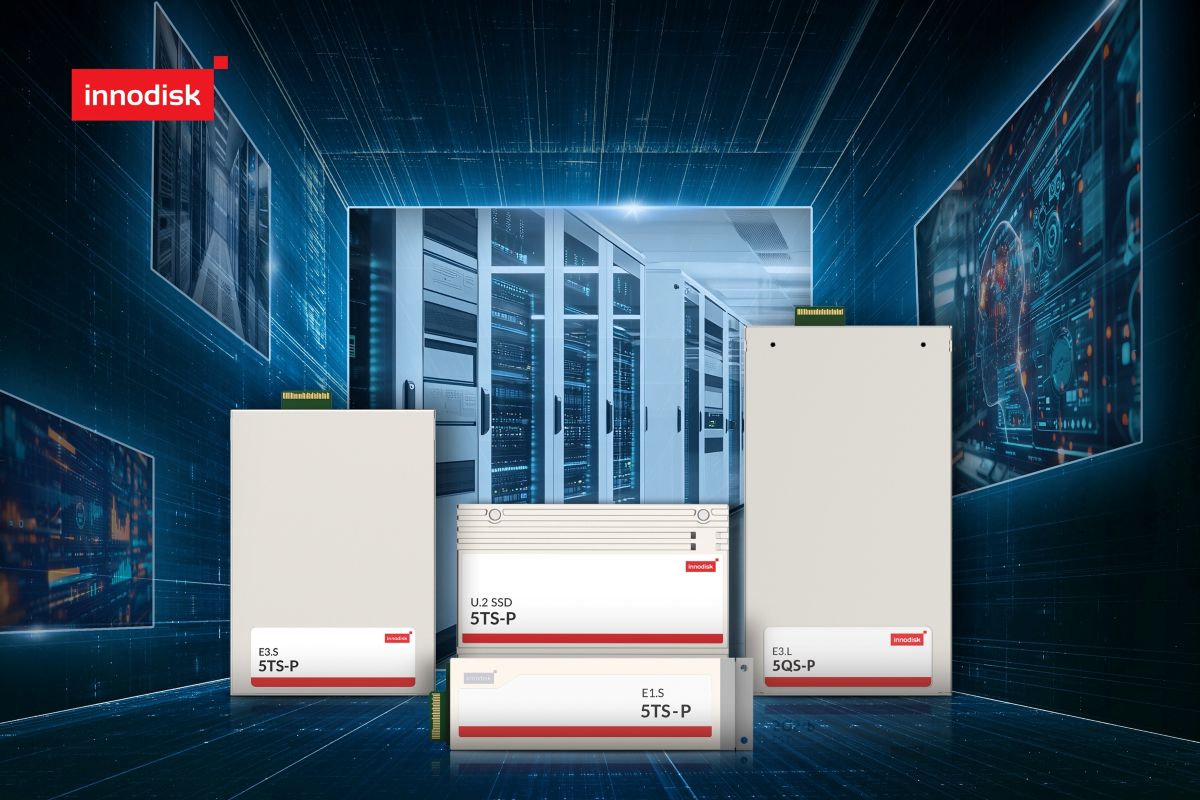Innodisk launches SSD series for data centre applications
Author: Simon Rowley

Innodisk, an industrial-grade flash storage provider, has announced the launch of its latest PCIe Gen5 SSD series, which is designed to meet the OCP Data Centre NVMe SSD spec v2.0 and the increasing demands of AI model training, big data analytics, and data-intensive environments.
The new series supports multiple form factors, including U.2, as well as EDSFF E1.S, E3.S, and the brand new E3.L for data centre applications, catering to the diverse needs of enterprise and data centre environments. Innodisk tells us that the new series marks a new chapter for the company in terms of further fulfilling enterprise demands.
The Innodisk PCIe Gen5 SSD, built with the latest PCIe Gen 5 x4 interface and NVMe 2.0 protocol, is designed to overcome the speed and latency limitations of traditional storage interfaces. With up to 128TB of high density NAND storage, it delivers speeds of up to 14GB/s (read) and 10GB/s (write), enabling lightning-fast data transfers for data-intensive applications.
Enterprise data centres managing large-scale storage deployments and multi-tiered environments often require out-of-band and batch management capabilities, which present growing challenges. Innodisk PCIe Gen5 SSD addresses these demands with NVMe-MI for streamlined SSD management and multi namespace support, ensuring scalable and efficient storage operations.
To ensure high quality and alignment with market trends, the PCIe Gen5 SSD aims to enhance integration with industry-leading data centre standards, such as OCP Data Centre NVMe SSD spec v2.0. Additionally, it is intended to be built for seamless integration with VMware, optimising compatibility with virtualised
environments and overall system performance.
Innodisk’s PCIe Gen5 SSD also features advanced security mechanisms, ensuring robust data protection and seamless integration. Secure Boot technology authenticates digital signatures during firmware updates, preventing unauthorised modifications and ensuring that only trusted firmware is executed.








